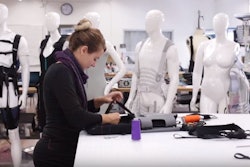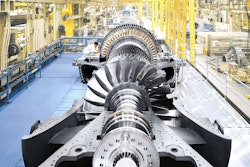Technological innovation is affecting every industry, including manufacturing. Digital transformation is the differentiator that enables businesses to keep pace with this innovation. It comes with challenges, but in the end leads to optimal business outcomes. It also requires a new strategy to ensure training and skills development not only keep up with technology, but also stay ahead of the curve. Employing a new strategy helps companies avoid talent shortages, minimize costs and see higher growth. A recent Cisco analysis found that a $20 billion manufacturing firm that digitizes could see a profit growth of almost 13 percent over three years.
Job Roles are Changing
Digital transformation not only changes the way our companies operate, but also the way that job roles are structured.
In the past, Information Technologies (IT) and Operational Technologies (OT) departments functioned as separate business units. As technologies like Internet Protocols (IP) and Ethernet became integrated on the plant floor, in many cases, plant floor workers were initially responsible for the management of these routers and switches. Meanwhile, the IT department managed processes such as internet access and IP phones but had little involvement in day-to-day happenings on the plant floor.
Today IT and OT have converged. For a control engineer who has been on the plant side of operations for 15 or 20 years, this can represent a radical shift in job responsibilities.
The role of the control engineer has also undergone significant changes as a result of emerging technologies. While in the past control engineers were expected to refresh their skills every 15 years, the shelf life of their skills has shortened to keep pace with IT innovation. Now, control engineers like IT staff, must update their skillsets every 3-5 years to stay relevant. In addition, automation has opened up new possibilities for them to upskill and take on higher levels of responsibility, ultimately driving the need for new skills and new ways of thinking.
Tomorrow’s Skills for Today
There are several critical skills manufacturing leaders are looking for. Manufacturing isn’t unique when it comes to technology skills — the same trends are affecting industries across the spectrum. Think security, cloud, big data and mobility, among others. Everyone is a technology worker in today’s economy.
However, one of the most critical skills needed isn’t a technical skill, but rather, a soft skill: flexibility.
Today’s control engineers, for example, might have been able to learn something once and then never have to learn it again — much like the old “you never forget how to ride a bicycle” adage. Tomorrow’s engineers won’t have that luxury. These employees will need to learn how to use different tools and technologies every few years.
A Culture of Continuous Learning
Developing the talent needed for digital transformation in manufacturing isn’t a “one and done,” point-in-time undertaking. As technology changes, skill sets and training must also evolve.
In this environment, the most successful leaders create a culture of continuous learning. As a collective industry — we need a change in mindset. It’s essential that manufacturing leaders implement new kinds of training and professional development programs that enable employees to cultivate new skills on an ongoing basis.
Beware of solely hiring new employees, however. Upskilling existing, experienced professionals already working in an organization provides inherent value in the form of institutional knowledge and understanding of workplace culture. These attributes only come with being at one company for a long time — and can’t be learned overnight.
It might cost more on the front end to retrain an existing employee, but the return is far higher. If you train someone and look at him or her six months later, compared to a new employee six months after hiring, the trained and experienced employee will be more productive in almost all cases.
The Bottom Line
Technology is continually evolving, and change is much needed to keep pace with innovation. This includes changing the way that we work and learn.
Knowing what skills are needed and how to support employees with training and learning, sets leaders and their organizations securely up for success in the digital future.
Sudarshan Krishnamurthi is head of business strategy for Cisco’s education services.























